PaperBack has a modular design and consists of two PCBs which plug together using male/female right angle 2.54mm pitch headers.
- Mandatory Breakout & Power Board
- This board has facilities to generate all the voltages needed by the ePaper Display and the ESP32 Dev Board. It can drive a 6" ePaper display from either the female headers (which are designed to fit an ESP32 Dev Board) or the board to board connectors on the left side.
It has an optional header for an ESP32, which can drive the ePaper Display either from RAM or over the network. There is also an optional Lithium battery charger/hookup; while the board is unplugged the Lithium Ion battery can power screen refreshes.
If you choose to use the VGA input board, the ESP32 must be removed; only one mode will work at a time.
- This board has facilities to generate all the voltages needed by the ePaper Display and the ESP32 Dev Board. It can drive a 6" ePaper display from either the female headers (which are designed to fit an ESP32 Dev Board) or the board to board connectors on the left side.
- Optional VGA Input Board
- This board has an ATMega328 microcontroller (for EDID information), a VGA PLL and capture chip (AD9883 or MST9883), 4 MBit of SRAM (framebuffer) and a LCMXO1200C FPGA for the high speed conversions.
Signals are passed over the board edge connection to drive the ePaper display connected to the first board.
While this board is employed, PaperBack can be used like a VGA monitor with a low refresh rate (i.e. secondary or tertiary monitor). Because it uses ePaper, it can be unplugged and moved (or even used!) without losing the information onscreen.
- This board has an ATMega328 microcontroller (for EDID information), a VGA PLL and capture chip (AD9883 or MST9883), 4 MBit of SRAM (framebuffer) and a LCMXO1200C FPGA for the high speed conversions.
Technical Specs:
- 6" E-Paper Display (e.g. the 6" Kindle Compatible Screens)
- ED060SC4 // LB060S01 // LB060S04
- 800x600
- User-selectable refresh rate (using onboard switches, furthest from uC to closest.)
- On On On - 16 color, ~10 seconds between frames
- On On Off - 16 color, ~5 seconds between frames
- On Off On - 4 color, ~10 seconds between frames
- On Off Off - 4 color, ~5 seconds between frames
- Off On On - 4 color, ~1 frame per second
- Off On Off - 2 color, ~10 seconds between frames
- Off Off On - 2 color, ~5 seconds between frames
- Off Off Off - 2 color, ~1 frame per second
- VGA Input
Hackaday Prize Prompts:
- Bills of Material
- Board 1
- Board 2 (Optional)
- NOTE: Board 1 can be run standalone with an ESP32! Board 2 is optional if you want VGA input. The ESP32 can't run if Board 2 is docked.
- Board 1
"Just Because": Doom on EPaper. Not exactly in its wheelhouse, but I got a kick out of making it!
License:
- MIT
 PK
PK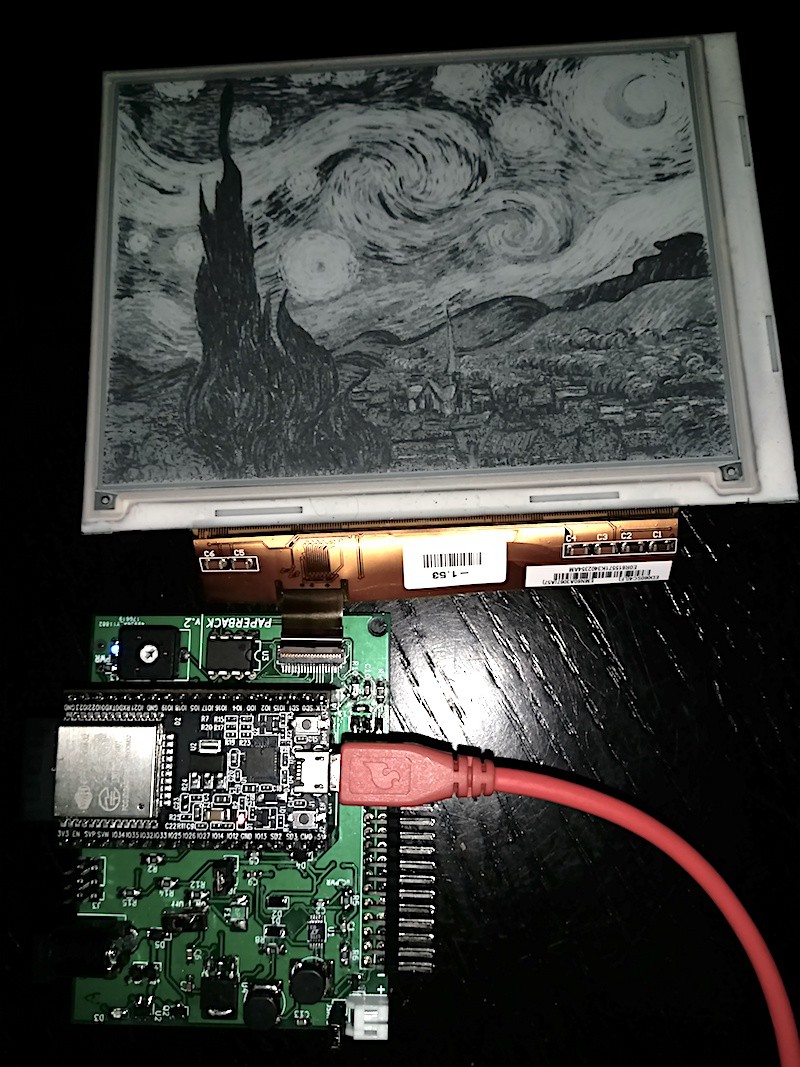

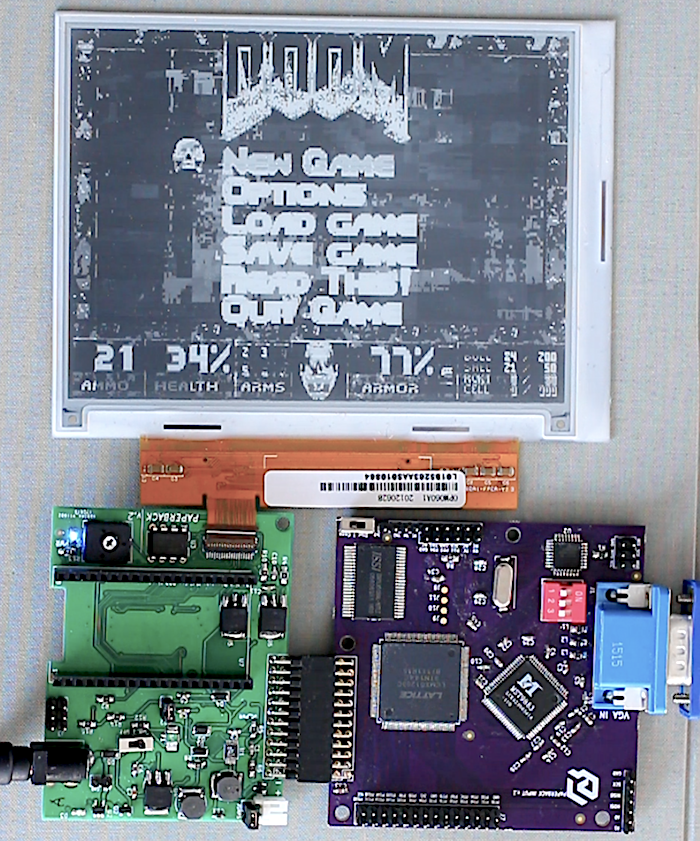

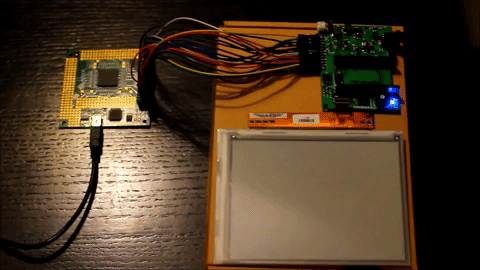
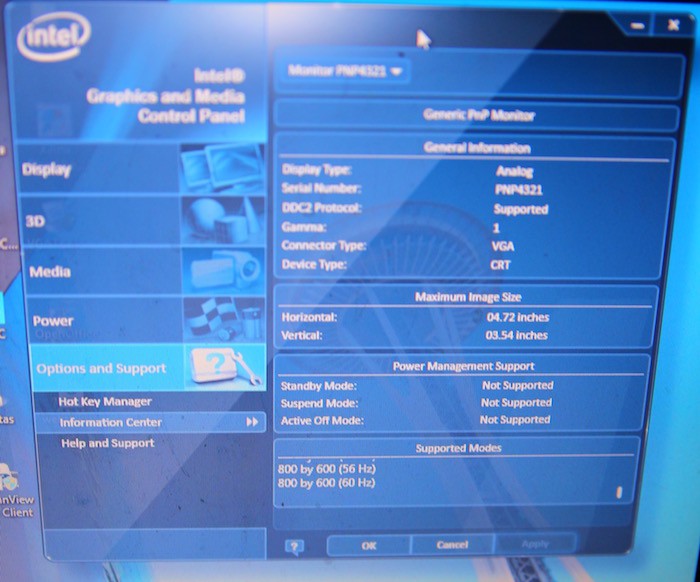
 Aren't they a good looking bunch?
Aren't they a good looking bunch?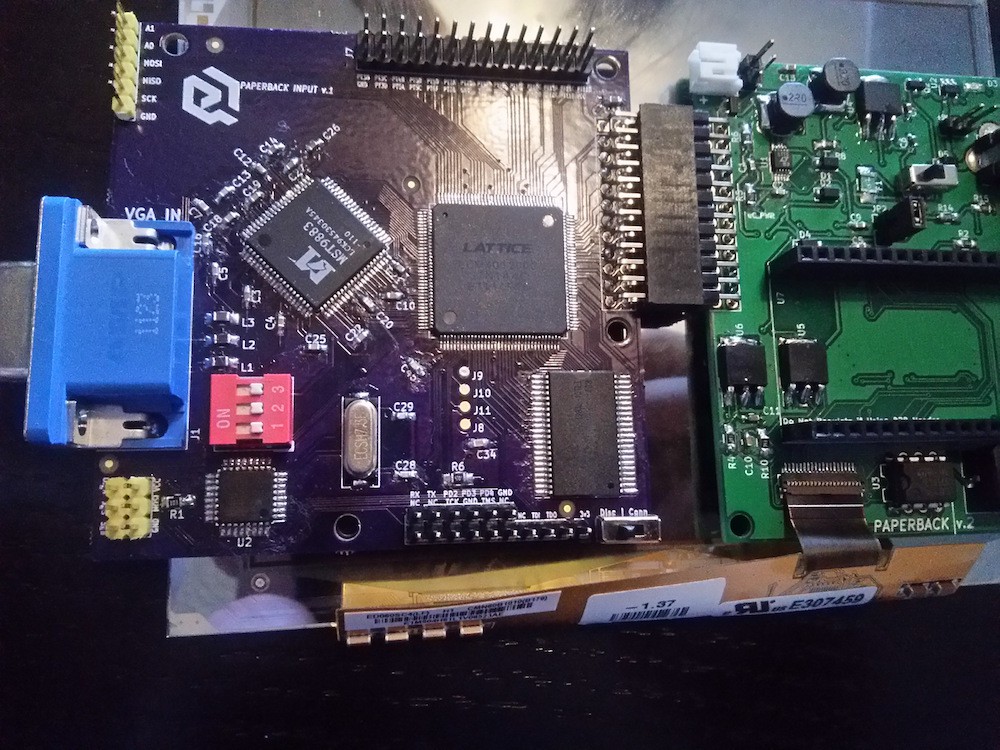 I've also got it docked with the first PCB, the power & breakout board - and you'll note I've removed the ESP32 from the headers.
I've also got it docked with the first PCB, the power & breakout board - and you'll note I've removed the ESP32 from the headers. 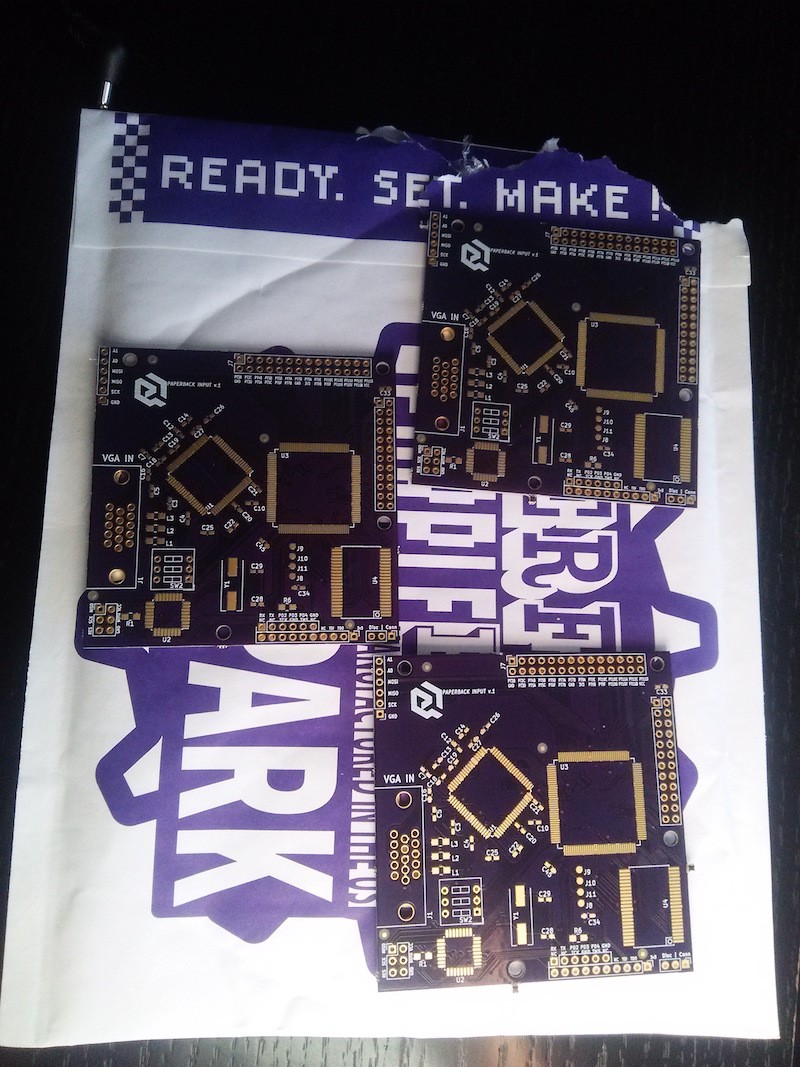




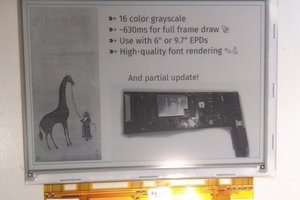
 Valentin
Valentin
 Platinenmacher
Platinenmacher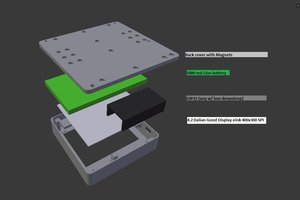
 Martin Fasani
Martin Fasani
 Eric Hertz
Eric Hertz
Very nice project! I'm wanting to make a breakout board for an ED060SC7 and this looks like an excellent base for that. My progress (if any after today, but I hope there will be ;-)) can be followed here: https://hackaday.io/project/160326-ed060sc7-kindle-keyboard-epaper-breakout-board